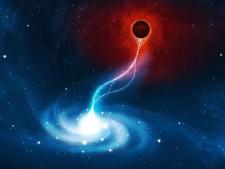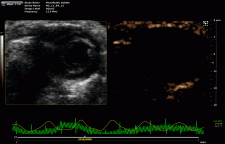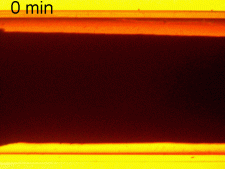Microfluidic Production of Microbubbles
Microbubbles are the most widely used ultrasound contrast agent and can be fabricated in a number of ways, including via sonication, agitation, and microfluidics.
Hossack lab studies the use of the microbubbles as imaging contrast agents and as therapeutic agents for drug delivery and sonothrombolysis. As shown below, microfluidic production occurs at the expanding nozzle of a microfluidic device, where precisely controlled gas and liquid streams meet to form microbubbles through a variety of pinch-off mechanisms. This method of microbubble production is capable of fabricating microbubbles of uniform size distribution at rates as high as 1 million microbubbles per second. We are also investigating the use of this technology in catheter-based applications and are in the process of developing on-chip electrical control and monitoring systems to regulate device operation in real-time.

Dixon, Ultrasound in Medicine and Biology, 2013


Dhanaliwala, Biomedical Microdevices, 2015

Dixon, Annals of BME, submitted 2017

Rickel, IUS 2017
Contact Information

John A. Hossack, Ph.D.
John A. Hossack develops ultrasound imaging approaches for cardiovascular disease, including mouse heart imaging, catheter-based imaging and drug delivery, and molecular imaging for diagnosing stroke risk. He obtained B.Eng. and Ph.D. degrees in Electrical and Electronic Engineering, University of Strathclyde and his postdoc at Stanford University.